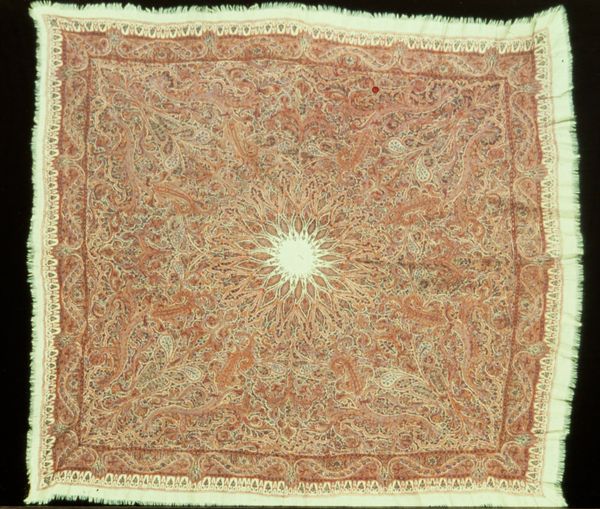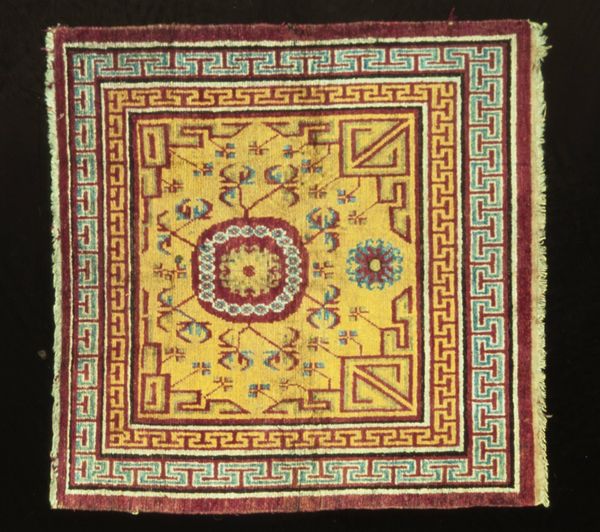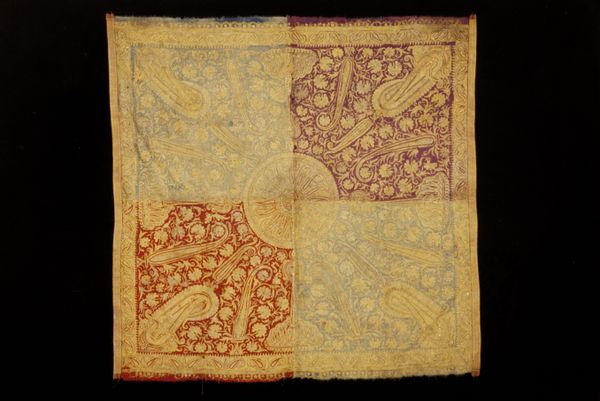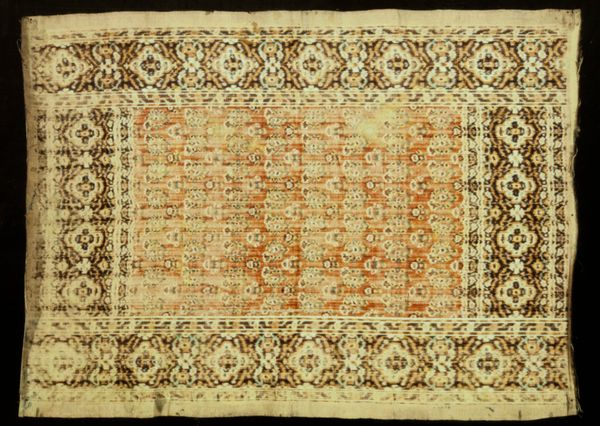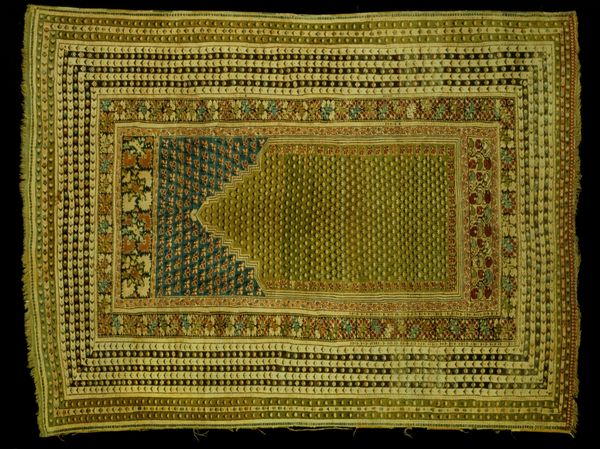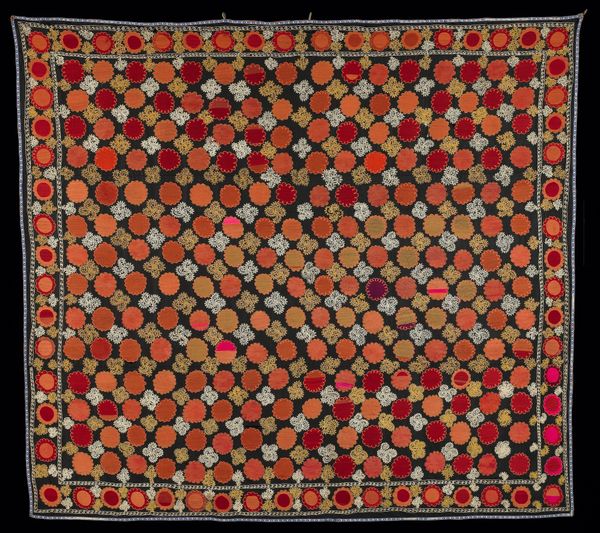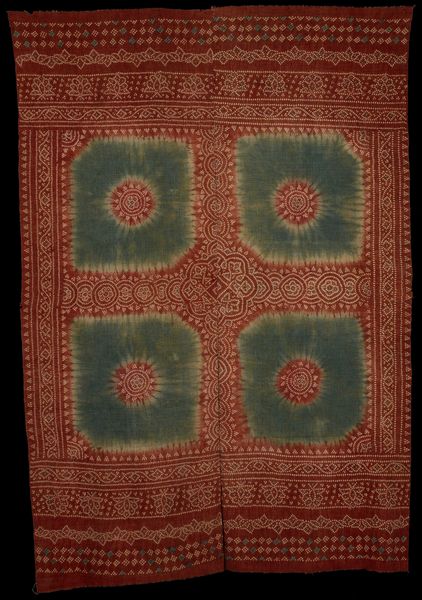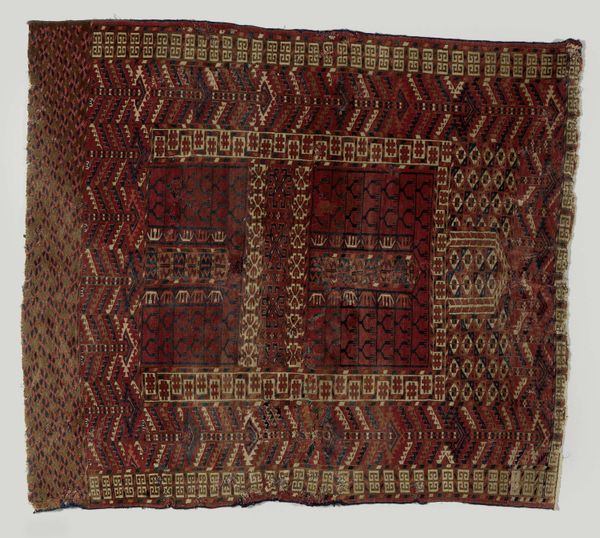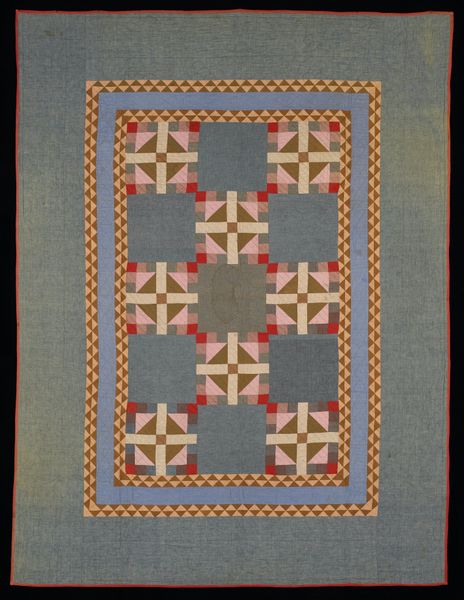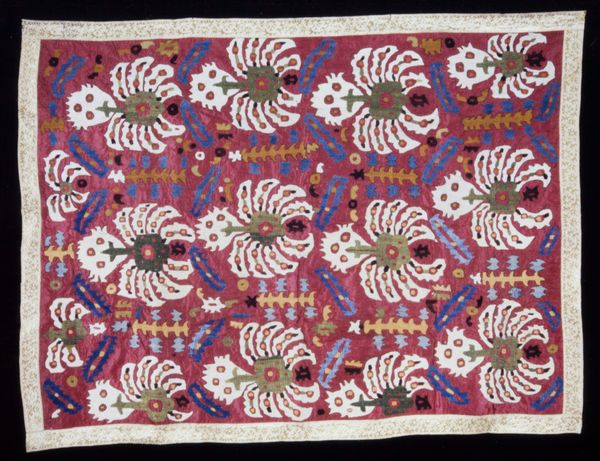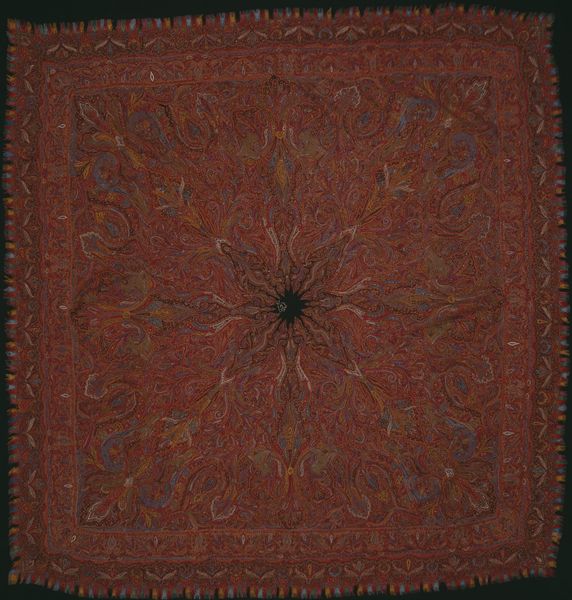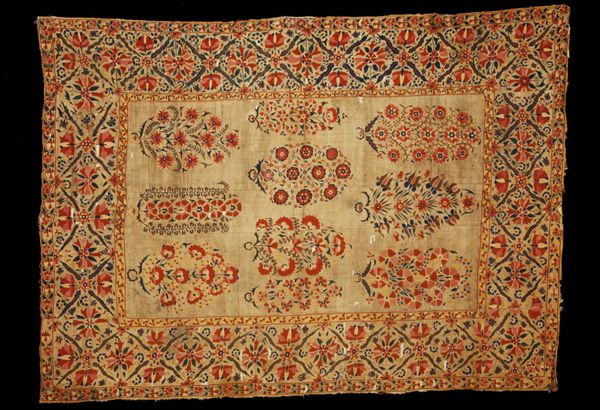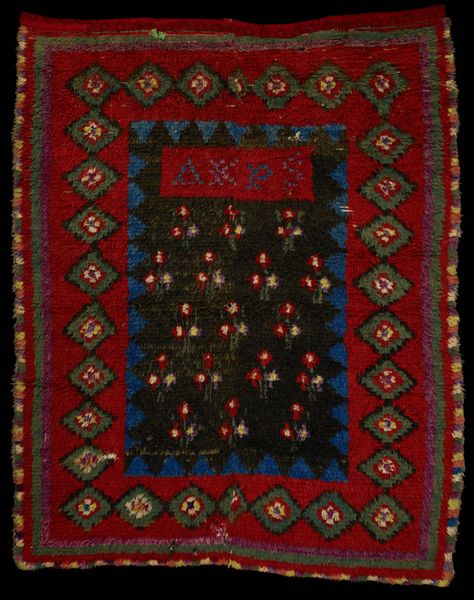
fibre-art, textile
#
fibre-art
#
pattern
#
textile
#
geometric pattern
#
geometric
#
romanticism
#
decorative-art
Copyright: Public Domain
This exquisite shawl was carefully woven, likely in Kashmir, from the finest pashmina wool. Look closely, and you'll see the intricate paisley patterns, carefully arranged in concentric bands. The material itself speaks to a global network of trade and desire, with raw wool sourced from the Himalayas and transformed by skilled artisans. The shawl's visual effect is due to the fineness of the fiber and the precision of the weaving. Such textiles were highly prized in Europe, where they became a symbol of luxury and status. But their production also speaks to the realities of labor in colonial India. Countless hours of skilled work went into each shawl, with the weavers remaining anonymous, their individual contributions subsumed into the final product. Paying attention to the materials and making of this shawl gives us a far richer understanding than simply considering its design. The shawl is more than just a pretty object; it is a testament to the interconnectedness of global trade, the uneven distribution of wealth, and the enduring power of human skill.
Comments
No comments
Be the first to comment and join the conversation on the ultimate creative platform.
